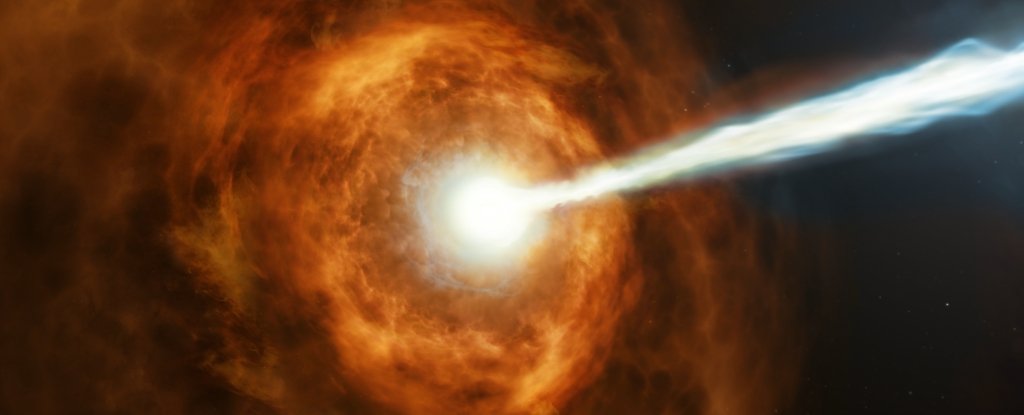Products You May Like
Last year, scientists detected the most energetic gamma ray burst we’ve ever seen. A distant galaxy spat out a colossal flare in the range of a trillion electron volts (TeV), providing invaluable new insight into the physics of these incredibly energetic events.
That was pretty amazing on its own – but now astrophysicists have used the burst to perform a new, precise test of the theory of general relativity. And – quelle surprise! – this test found that the speed of light is constant in a vacuum.
Relativity, once again, has passed with flying colours.
The test hinges on a fundamental principle of special relativity called Lorentz invariance. It expresses that, no matter where you are in the Universe, the laws of physics – including the speed of light in a vacuum – remain the same.
Some theories suggest that Lorentz invariance could break down – what is called Lorentz invariance violation – at very high energies, causing the speed of light to change due to the effects of quantum gravity.
If this were to happen, we’d need a new physical theory to explain it.
This is where gamma rays come in. Gamma radiation is the most energetic radiation on the electromagnetic spectrum, produced by the radioactive decay of atomic nuclei.
Gamma radiation is blasted out from gamma ray bursts, and emitted from dead stars such as neutron stars and black holes within the Milky Way.
This dead star gamma ray emission has been detected in energies up to 450 TeV, and emission up to 100 TeV has been used to test whether gamma rays speed up under the violation of Lorentz invariance.
The energy from this latest gamma ray burst – called GRB 190114C, emanating from a galaxy 4.5 billion light-years away – was lower in energy, between 0.2 and 1 TeV, but it offered a new regime for testing, since Lorentz invariance violation should accumulate over distance, making it more pronounced the farther it travels.
“No Lorentz invariance violation study was ever performed on gamma ray burst data in the TeV energy range, simply because there was no such data up to now,” explained astronomer Tomislav Terzic of the University of Rijeka in Croatia.
“For over twenty years we were anticipating that such observation could increase the sensitivity to the LIV effects, but we couldn’t tell by how much until seeing the final results of our analysis. It was a very exciting period.”
It actually wasn’t a simple task. In order to detect the emission time of photons – when they left their point of origin, allowing for a calculation of their overall speed – some variation is required in the signal.
However, the GRB 190114C light curve decayed monotonically, or smoothly, which meant that, based on that information alone, it was impossible to tell how long it had taken to travel across space.
“When comparing the arrival times of two gamma-rays of different energies, one assumes they were emitted instantaneously from the source,” explained astrophysicist Daniel Kerszberg of the Institute for High Energy Physics of Barcelona in Spain.
“However, our knowledge of processes in astronomical objects is still not precise enough to pinpoint the emission time of any given photon.”
So, the team turned to theoretical modelling to predict the gamma-ray emission from the source of GRB 190114C from before telescopes started observing it.
This gave a light curve that rose steeply, peaked and then decayed monotonically, just as the actual source had been observed doing.
This allowed the team to calculate the emission timing – and found no delay consistent with the violation of Lorentz invariance.
This doesn’t mean that Lorentz invariance can’t be violated at higher energies, but it does place constraints on both Lorentz invariance violation and on the effects of quantum gravity.
The research has been published in Physical Review Letters.
